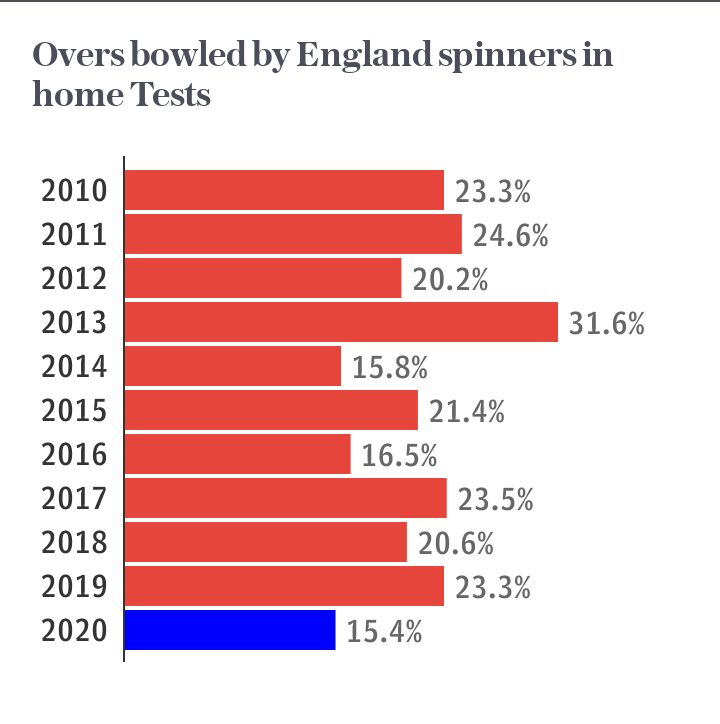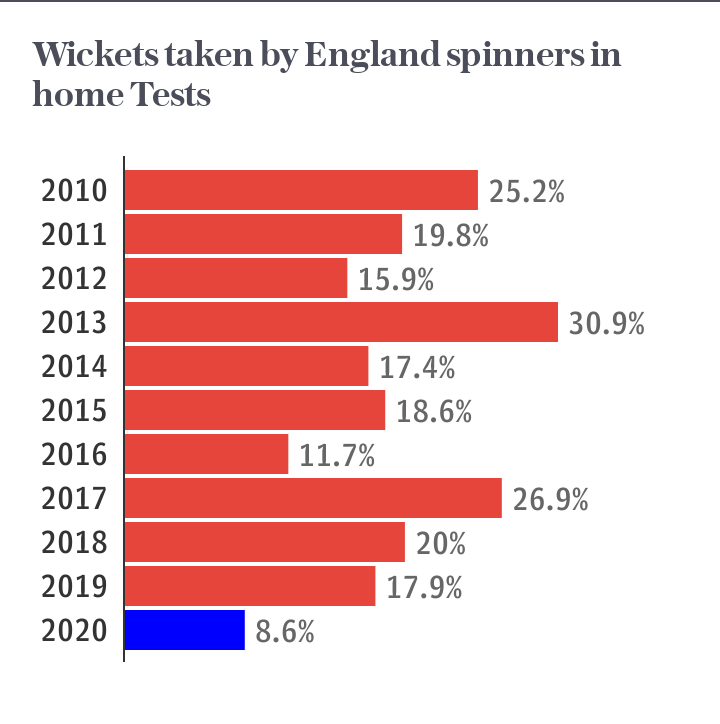Dearth of spin has removed a spectacle from this summer's cricket

When Pakistan’s cricketers prepared for their first Test tour of England, there was no video footage, no data, no analysis, no high performance centre, no indoor school in the entire country, and so few resources that the players had to travel by train, and not first-class either. Yet in the four-Test series of 1954 they held England, who were going to retain the Ashes that winter, to a 1-1 draw.
The Karachi-based players did not even have a cricket ground with a grass pitch in those days, although the ones who played in Lahore’s cooler climate did. Difficult for batsmen to prepare for lavish swing and seam movement on matting. So their ingenious way of training for English conditions was to roll out a grass pitch in the Karachi garden of a religious leader, the Pir of Pagaro (possibly the only religious leader to have had his own cricket team), water it copiously, then hold net practice in the evenings, when the light was fading, to replicate England.
Conditions for the five Tests so far this summer have been pretty similar to what they were in that wet and low-scoring season of 1954: thick cloud, rain threatening, the ball nibbling around, batsmen never in, and many hours of play lost, though there weren’t any floodlights in 1954.
The difference between then and now has been the monochrome nature of this summer’s cricket. We are of course duly grateful to have any cricket, and well played on all sides for putting on a show. But, it should still be said, the type of cricket has not been reflecting the sport’s diversity.
Four seamers have been banging away most of the time since July 8, whichever country has been in the field. West Indies played four pace bowlers until they missed a trick in the third Test at Old Trafford by selecting a specialist offspinner in Rahkeem Cornwall then sending England in.
England have rotated their four seamers, with Stuart Broad to the fore, and even bowled five in their last Test against Pakistan when Ben Stokes had a go. Together they have bowled with great efficiency, skill and dexterity in using the seam, but the constant diet of pace bowling has been like eating eggs, or pasta, for three meals a day. Dom Bess, in his fifth Test of the summer, has yet to bowl 100 overs and did not even turn his arm in the third Test against West Indies.
It was lovely to have the rich sauce of Yasir Shah to go with the pasta in the first Test against Pakistan, but so far in the second it has been back to the same old diet. And Joe Root would be wrong to do anything else except bang away with his four swing-and-seamers; everything is stacked in their favour from the conditions to the Dukes ball, which has swung right up to the 80th over, so expert have England become at using sweat to shine one side.
But the balance between bat and ball has not been quite right — the totals too low — and the balance between pace and spin has been completely lop-sided. As these tables show, spin has never been so marginalised in the last decade, and possibly ever, than it has been this summer, so far as England’s Test bowling has been concerned.


Back in 1954 England had Alec Bedser, Brian Statham and Frank Tyson to use the new ball. Yet they also selected five specialist spinners in those four Tests, and the most successful wicket-taker was the left-arm spinner Johnny Wardle. This summer will not see a left-arm spinner at all, on any of the three sides, unless Jack Leach is brought in for the final Test.
We should be grateful for anything this summer but some tweaks or modifications need to be made to correct this imbalance and encourage more diversity. In addition to more spin, we need batting to become easier when the ball ages and softens. Batsmen this summer have seldom been set — an exception when Ben Stokes made his imperious 176 against West Indies — and they deserve to have their time in the sun, after giving the bowlers their first hour at the crease.
It is not good for cricket, and it is not good for England either, if all six Tests of this summer are of the same low-scoring, seam-and-swing, play-and-miss nature. Nowhere else in the world, for a start, is this style of cricket played - for that Pir of Pagaro has passed on and the ball is no longer nipping off the seam in his Karachi garden.

 Yahoo News
Yahoo News 
